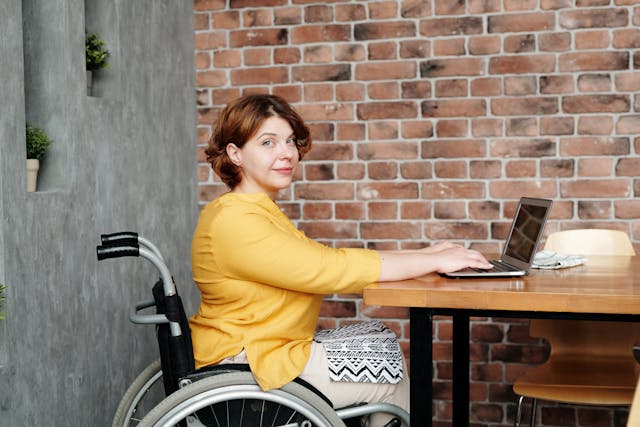The way disability and prosthetics are portrayed in the media shapes public perception. News stories have the power to educate, inspire, and challenge stereotypes, but they also run the risk of reinforcing misconceptions. Too often, disability coverage focuses on pity, heroism, or extreme cases rather than showing real, everyday experiences. A better approach would be to portray individuals with disabilities with accuracy, dignity, and respect. When done right, media coverage can break stigmas and create awareness that leads to positive change.
Avoiding the “Inspiration” and “Tragedy” Traps
Many news stories about disability and prosthetics fall into one of two categories: overly inspirational or deeply tragic. Both approaches, while often well-intentioned, can be problematic.
The Problem with the “Inspiration” Narrative

News outlets often highlight individuals with disabilities as “overcoming the odds” or “defying expectations.” While their achievements deserve recognition, framing every story this way can reduce their experiences to feel-good moments rather than presenting them as people living normal, full lives. A prosthetic user who plays sports or excels in their career should not automatically be treated as extraordinary—many do these things as part of their routine.
This narrative can also set unrealistic expectations for people with disabilities. It implies that success is only defined by remarkable achievements rather than everyday independence and fulfillment. Not everyone wants to be an athlete, motivational speaker, or record-breaker, and that’s perfectly fine. Media should focus on telling diverse stories that reflect all aspects of life, not just the ones that seem most inspiring to the public.
The Danger of the “Tragedy” Narrative
On the other end of the spectrum, some stories depict disability as a personal tragedy. They emphasize loss, struggle, and dependence, often making disability seem like an insurmountable burden. While challenges are a reality, framing disability solely as suffering ignores the fact that many individuals adapt, innovate, and thrive with the right support and technology.
This perspective can also impact policy and social attitudes. If disability is always shown as a tragic experience, society may focus more on sympathy than on real solutions. The media should shift the conversation from what is “lost” to what can be done to improve accessibility, technology, and inclusivity.
Balancing Realism and Respect
A better way to cover disability and prosthetic stories is to focus on real experiences without extremes. This means presenting both challenges and achievements honestly. Journalists should ask themselves: “Would I tell this story the same way if the person didn’t have a disability?” If the answer is no, then the coverage may need to be reframed.
Giving Disabled Voices a Platform

One of the best ways to improve media coverage of disability and prosthetics is to allow people with disabilities to tell their own stories. Too often, journalists speak about people with disabilities instead of to them.
Including More First-Person Perspectives
Instead of relying on doctors, family members, or charity workers to describe the experiences of people with disabilities, the media should seek out their voices directly. First-person perspectives provide authenticity and prevent misinformation. When someone shares their own experiences, it adds depth and nuance that an outsider cannot capture.
For example, when covering prosthetic technology, journalists should interview actual prosthetic users about how the device has impacted their lives. Rather than just focusing on the technical aspects, they can highlight personal insights—what feels comfortable, what challenges exist, and how the prosthetic integrates into daily life.
Avoiding Sensationalism in Interviews
Interviews should be conducted with sensitivity and respect. Questions should avoid emphasizing loss or suffering and instead focus on the individual’s thoughts, choices, and experiences. Asking “How do you navigate daily life?” is far better than “How hard is it to live like this?” The framing of questions can greatly impact the tone of the story.
It is also essential to respect the privacy of those being interviewed. Not everyone wants to share their medical history or traumatic experiences. Journalists should allow people to define their own narratives rather than forcing them into a predetermined storyline.
Hiring More Disabled Journalists
A long-term solution is increasing representation within newsrooms. When people with disabilities are part of media teams, they can provide firsthand perspectives, challenge stereotypes, and shape stories in a more accurate and empowering way. They can ensure that disability coverage is not limited to medical advancements or extreme success stories but also includes everyday experiences, accessibility issues, and policy discussions.
Focusing on Technology and Accessibility

Media often portrays prosthetics as futuristic marvels, but real-world accessibility is just as important as innovation. While new advancements are exciting, the focus should also be on making prosthetic technology widely available and improving support systems.
Highlighting Affordability and Accessibility
Many prosthetic stories in the media focus on cutting-edge bionic limbs that look straight out of science fiction. While these devices are impressive, they are often expensive and not available to most people who need them. Instead of just celebrating technological achievements, the media should explore how prosthetics can become more affordable and accessible.
For example, at Robobionics, we prioritize making prosthetic solutions practical, lightweight, and cost-effective. Our focus is on improving real lives, not just creating high-tech devices that only a few can afford. The media should ask important questions like: “Who has access to these advancements?” and “What challenges still exist in getting prosthetics to those who need them?”
Discussing Accessibility Beyond Prosthetics
Disability stories should not be limited to prosthetic technology. Accessibility in workplaces, public spaces, transportation, and digital platforms also needs attention. A person with a prosthetic hand may still face barriers if their office is not wheelchair accessible or if public transport is not disability-friendly.
By shifting the focus from individuals “overcoming” their challenges to how society can remove barriers, the media can drive real conversations about inclusivity. Instead of just highlighting someone who successfully climbs a flight of stairs with a prosthetic leg, coverage should also discuss why there aren’t more ramps in public places.
Exploring the Role of Rehabilitation and Support
A prosthetic limb is only part of the journey. Proper rehabilitation and training are crucial for adaptation, yet this aspect is often missing from media coverage. Many users go through months of therapy to adjust to their new limb, but the media tends to skip this step in favor of dramatic “before-and-after” stories.
At Robobionics, we emphasize gamified rehabilitation to make the transition easier and more engaging for users. Journalists covering prosthetic advancements should also highlight these programs, as they play a major role in improving long-term success.
Changing Language and Terminology

The words used in media coverage shape how people think about disability. Outdated or negative terminology can reinforce stereotypes, while more neutral and respectful language can encourage inclusivity.
Avoiding Negative or Patronizing Terms
Words like “suffering from,” “afflicted with,” or “bound to a wheelchair” imply helplessness. Instead, neutral terms like “uses a wheelchair” or “has a prosthetic limb” are more accurate and respectful. Similarly, referring to someone as a “victim” of an accident instead of a “survivor” shifts the focus to pity rather than resilience.
Using Person-First or Identity-First Language Thoughtfully
Some people prefer “person with a disability” (person-first language), while others prefer “disabled person” (identity-first language). The best approach is to ask individuals how they want to be described and respect their preference.
Being Mindful of Headlines and Clickbait
Sensational headlines like “Man with One Arm Conquers the Odds!” or “Brave Girl Learns to Walk Again!” may attract attention but often reduce complex stories to clichés. Instead, headlines should focus on the story itself without unnecessary exaggeration.
The Responsibility of Media in Shaping Policy and Public Perception

Media coverage of disability and prosthetics does more than just inform—it influences public opinion and, ultimately, policy decisions. Governments, organizations, and businesses often respond to the narratives presented in the news. When the media accurately represents disability-related issues, it can lead to meaningful change in laws, funding, and accessibility initiatives.
How Media Can Drive Policy Change
When journalists highlight real challenges that people with disabilities face—such as high prosthetic costs, limited accessibility, or lack of inclusive employment opportunities—it puts pressure on decision-makers to act. A well-researched news report on the affordability of prosthetics, for example, can spark conversations about insurance policies, government subsidies, and research funding.
At Robobionics, we advocate for wider access to affordable prosthetics, and media coverage plays a huge role in amplifying these concerns. Instead of focusing only on the latest high-tech prosthetic breakthroughs, journalists should also investigate the broader system: Are prosthetics covered by insurance? Are rehabilitation services accessible to all? These are the stories that drive real-world change.
Shifting the Narrative from Charity to Inclusion
Many disability-related stories in the media are framed as charity cases, focusing on donations and fundraisers rather than systemic solutions. While charity efforts are valuable, long-term change comes from inclusion rather than one-time acts of kindness.
For example, instead of highlighting a company that “donates” a prosthetic to a person in need, the media should also explore why so many people require donations in the first place. Is prosthetic technology too expensive? Are there financial barriers to healthcare access? By shifting the narrative to structural issues, the media can encourage governments and businesses to prioritize inclusivity and affordability in the long run.
Encouraging Representation in Decision-Making Roles
Another way the media can support change is by advocating for people with disabilities to be included in decision-making roles. This applies to government, corporate leadership, product design, and even newsrooms themselves. Stories that highlight disabled leaders, entrepreneurs, and innovators challenge stereotypes and promote policies that benefit the entire community.
The more the media amplifies diverse voices and real issues, the more it encourages society to create lasting solutions rather than temporary fixes.
The Role of Social Media in Changing Disability Narratives

Traditional news outlets are no longer the only source of information about disability and prosthetics. Social media has given people with disabilities a direct platform to share their experiences, challenge stereotypes, and advocate for change. Unlike traditional media, which often filters stories through journalists and editors, social media allows for raw, unfiltered narratives that can reach a global audience.
Empowering Voices Through Digital Platforms
Social media platforms like Instagram, Twitter, TikTok, and YouTube have allowed people with disabilities to tell their own stories without the limitations of mainstream media. Influencers, athletes, and activists with prosthetic limbs are using these platforms to educate, entertain, and normalize disability. Instead of being portrayed as “inspirational” or “tragic” through a third-party lens, individuals can control their own narratives, showing the reality of living with a disability in a way that feels authentic.
For example, many prosthetic users now document their daily experiences, from adjusting to a new limb to debunking myths about disability. This type of content helps break stereotypes and educate audiences who may have never interacted with a person using a prosthetic before. At Robobionics, we encourage these real-life conversations, as they help people see prosthetics as normal, everyday tools rather than extreme success stories or symbols of struggle.
The Rise of Viral Awareness Campaigns
Hashtags and viral trends have played a major role in raising awareness about disability and prosthetics. Campaigns like #DisabledAndProud and #WeThe15 have helped bring attention to accessibility issues and discrimination, while prosthetic users have participated in viral challenges to showcase their abilities.
Unlike traditional media, which often focuses on extreme cases, social media allows for more diverse representation. A person using a prosthetic hand to play the guitar, another sharing their journey of adapting to a new limb, or someone discussing accessibility barriers in public spaces—these are the real, everyday stories that social media amplifies.
However, with this increased visibility comes the responsibility to ensure accuracy and respect. While many social media users create educational and engaging content, there is also a risk of misinformation or content that reinforces stereotypes. This is why it is crucial for both mainstream media and social platforms to prioritize voices that truly represent the disability community.
Challenging Traditional Media Through Social Conversations
Social media has also become a tool to hold traditional news outlets accountable. When a news story misrepresents disability or uses patronizing language, the online disability community is quick to call it out. Public discussions on social media can push journalists to rethink their approach, ensuring better representation in future stories.
For instance, if a news outlet publishes a piece with an outdated term like “crippled” or frames a prosthetic user as a tragic figure, social media backlash can lead to corrections and more thoughtful reporting. This shift in accountability ensures that disability stories are told with more accuracy, fairness, and dignity.
At Robobionics, we believe that social media has the power to change perceptions and create a more inclusive world. By amplifying authentic voices, correcting misinformation, and promoting education, digital platforms can complement traditional media in shaping a more accurate narrative about disability and prosthetics.
Conclusion
The media has a powerful role in shaping how society views disability and prosthetics. By moving beyond stereotypes, including diverse perspectives, and focusing on accessibility, news outlets can create more meaningful and impactful stories. People with disabilities should not be portrayed as either superheroes or objects of pity—they are individuals with experiences that deserve to be told honestly and respectfully.
At Robobionics, we believe that real change starts with awareness. By improving the way disability and prosthetic stories are covered, the media can help drive positive societal change. If you’re a journalist, content creator, or reader, consider how stories are framed and push for narratives that empower rather than stereotype.



